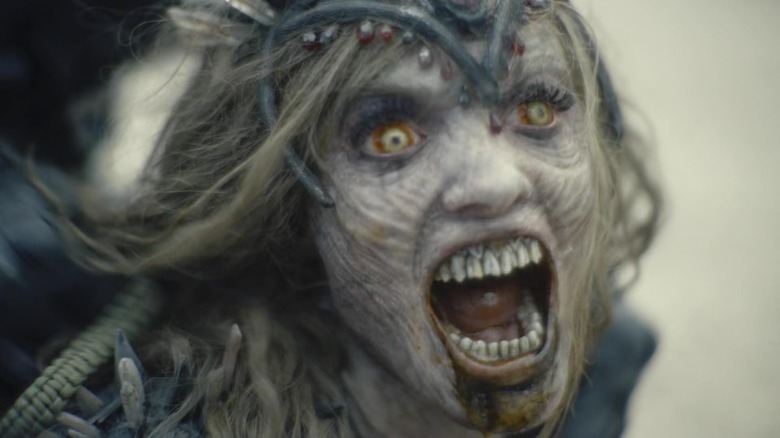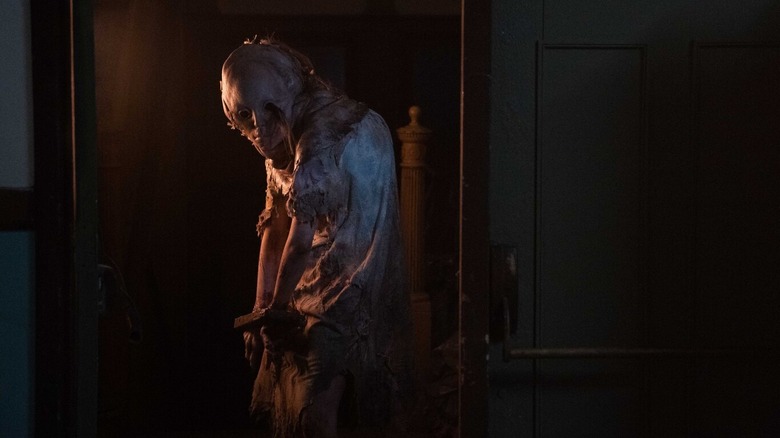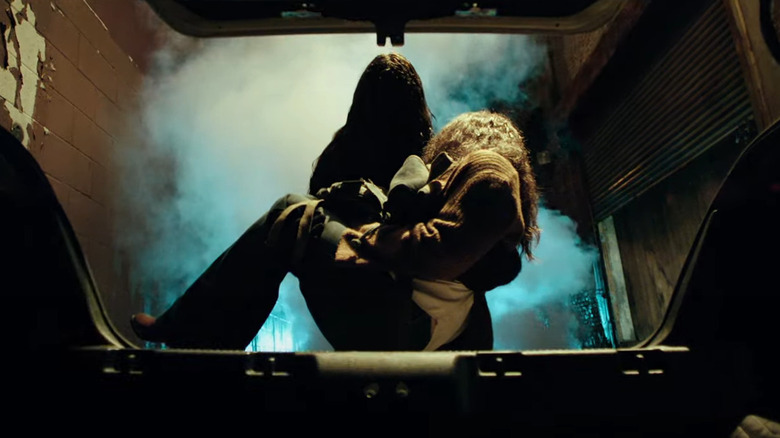Why Dancers Make Such Epic Zombies
Surely at some point in their lives, everyone has practiced their own zombie shuffle. Perhaps a late-night viewing of George A. Romero's 1968 classic "Night of the Living Dead" led us to practice. Perhaps you and several friends wanted to dress up as a zombie horde for Halloween. Perhaps it's just fun to stagger like the undead on your way to the bus stop. The movements are familiar: Arms hanging, unmoving at your sides. If you are an ambitious zombie, perhaps grasping claw hands out in front of you. The shoulders must be slumped and the head tilted to one side; no self-respecting zombie walks upright. Walk as if you are slightly dizzy or perhaps a little drunk. A zombie must be a little off-balance at all times. If feeling particularly ambitious, you can imagine a slightly decomposed leg or foot and affect a limp. But be warned: do not drag a straight leg behind you when mastering your zombie walk, as a dragged foot is more of a mummy thing. That's an amateur mistake.
When it comes to making zombie movies, a good zombie shuffle is key, and often zombie performers train with special movement coaches to ensure that their undead movements look truly undead; one can't have a zombie who skips along merrily. In an interview with Daily Actor, actress Jessica Lucas, star of 2013's "Evil Dead," talked about how she and he co-stars had to train with a pair of coaches in order to contort themselves in interesting ways and really make their bodies look twisted and possessed by Deadites.
And sometimes filmmakers will hire mimes, contortionists, and — most commonly — professional dancers to play zombies. The decision is logical. Who better to display supernatural feats of muscular movement than a professional dancer? The shuffling, gnashing, and prowling of a half-rotted corpse could be considered, in its own way, a form of interpretive dance, with the performer evoking death and violence through movement alone. Several notable productions have hired dancers to play prominent zombies, creating truly terrifying monsters.
Welcome to Raccoon City
Dancer and stunt performer Athena Perample might be one of the more recent, prominent examples of a striking zombie performer. Perample played the zombie queen in Zack Snyder's Netflix film "Army of the Dead." In that film, the entire city of Las Vegas has been walled off due to a zombie outbreak, and a team of mercenaries is tasked with staging a heist in the middle of a zombie horde before the entire city is wiped out by a nuclear bomb. Over the course of the film, the mercs find that zombies have quickly evolved to the point of appointing a king and queen. The zombie queen, with wild orange eyes and gnarly teeth, is easily the most menacing of any zombie in that film, and we owe Perample's amazing physicality to that. Perample had previously served as a stunt performer, and also be seen in "Terminator: Dark Fate."
In the 2014 "Bang Bang Baby," dancer Kalie Hunter was credited as merely "dancer #5." That same year, Hunter appeared in the TV movie "One Starry Christmas," this time as "line dancer #4," so she moved up in the world quickly. Hunter would finally reach #1 in 2021, playing Chernobyl Zombie #1 in Johannes Roberts' "Resident Evil: Welcome to Raccoon City." Based on a series of horror video games, "Raccoon City" featured multiple set-pieces with T-virus infected residents of the eponymous town lurching out of the shadows at our protagonists. The zombies in "Raccoon City" skittered and lunged in a fascinating way, meant to evoke playing a first-person shooter video game.
And where would Chernobyl Zombie #1 be without Chernobyl Zombie #2? Look up the filmography of one Andrea Ciacci, and you'll find a dancer who appeared in "The Cheetah Girls" movie in 2003, danced in the Jessica Alba vehicle "Honey," appeared as a dancer on "What We Do in the Shadows," and who became a terrifying ghoul, playing Chernobyl Zombie #2 in "Raccoon City." One may like to imagine Hunter and Ciacci idly choreographing dance numbers in between takes on the set of "Raccoon City," creating undead Twyla Tharp routines.
Our friend, Gabriel
In James Wan's 2021 film "Malignant" — a film destined for cult status — a young woman is stalked by visions of a spindly, cloaked ghoul who is murdering doctors. This mysterious figure is none other than Gabriel, a childhood imaginary friend who is somehow manifesting himself in the real world. There are additional twists besides, one of which may go a long way to explain Gabriel's strange, backward-elbowed, contortionist-like movements. One can credit Marina Mazepa for that. Mazepa played the character of Lisa in "Raccoon City," but also had competed in various dance competition shows earlier in her career, including "La France a un Incroyable Talent" as well as "America's Got Talent." Mazepa also played a mysterious entity in the 2021 film "The Unholy."
Much credit should be given to choreographer Jeon Young, who conceived of the balletic zombie movements for the notable 2016 horror movie "Train to Busan." Sang-Ho Yeon's intense yarn takes place mostly on the titular train as the world descends into zombie chaos. Young is part of a public dance troupe called Centipedz, which would take to the streets of Korea and perform guerilla-style, their name derived from a "bone-breaking" contortionist style. Young was essentially the real-world version of the characters from "Step Up 2: The Streets." In an interview with Korea JoongAng Daily, Young said:
"I thought I would become famous through dancing, if one of our dance clips went viral online. I was attracted to bone-breaking because it was unique. When other people saw this type of dance, we saw that it certainly left an impression for its uncanniness, and it excited us that we were the pioneers of a new genre of dance."
It was certainly enough to create an army of the undead. The next time you see a living corpse unnaturally bending their bodies to apprehend a victim, think of the dancers and choreographers that brought those movements to life.


